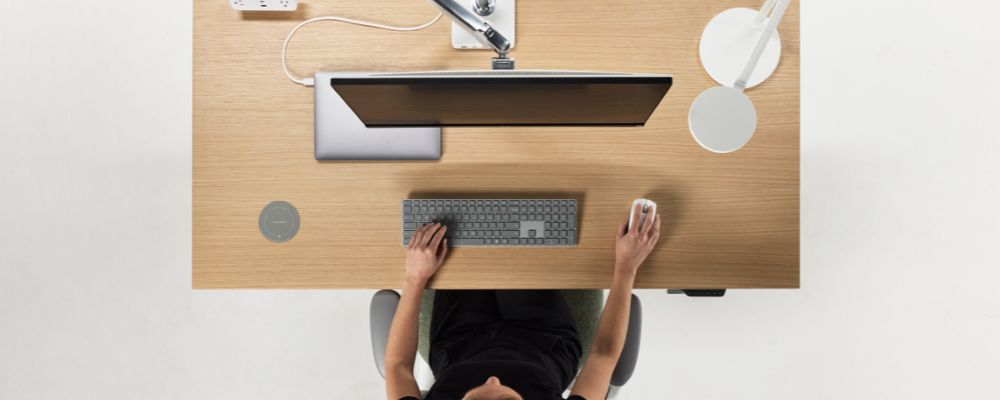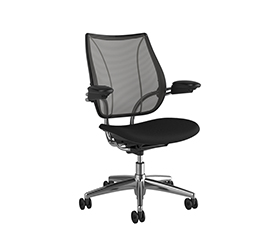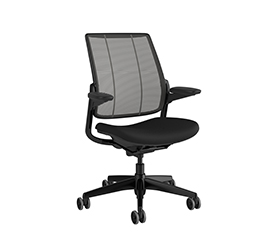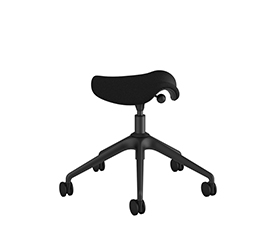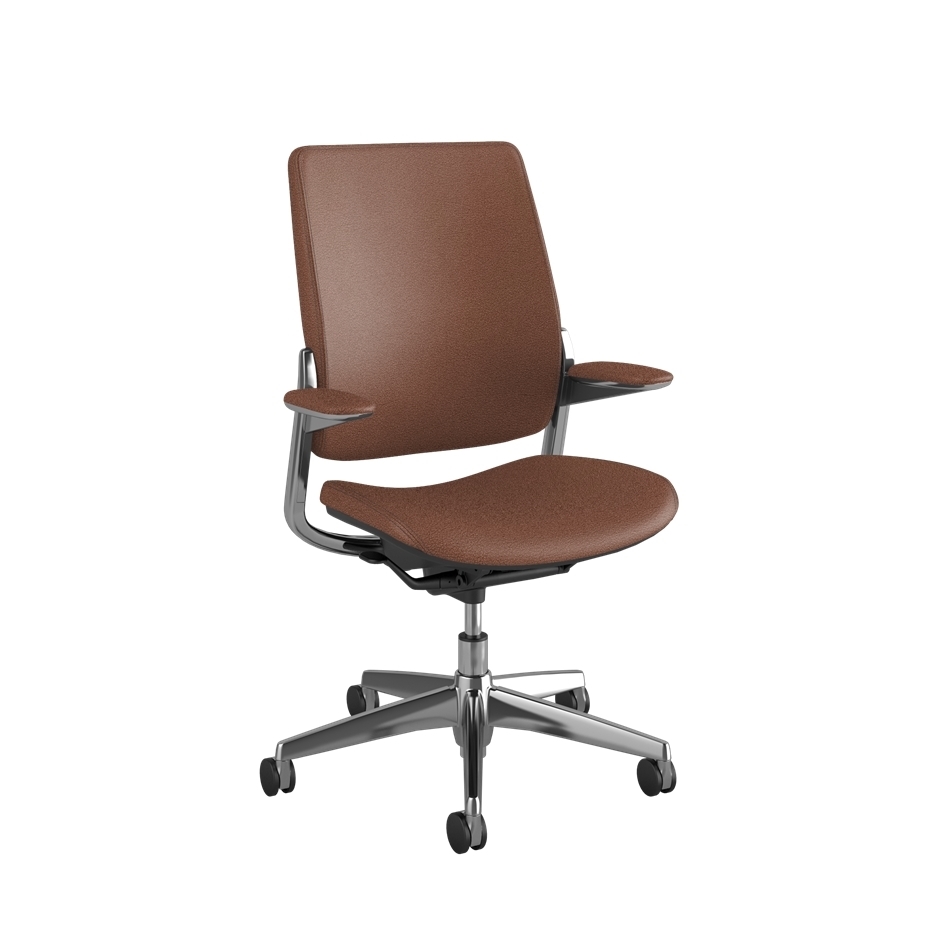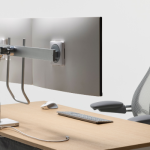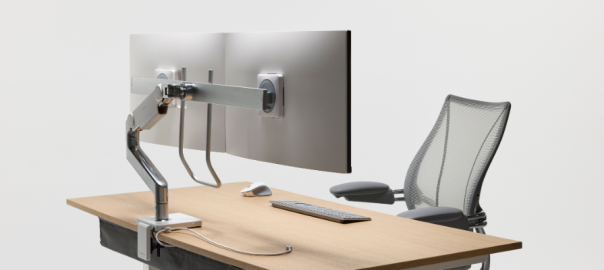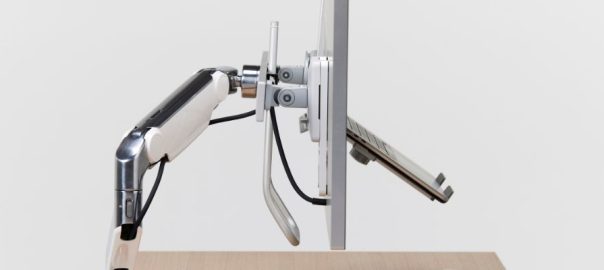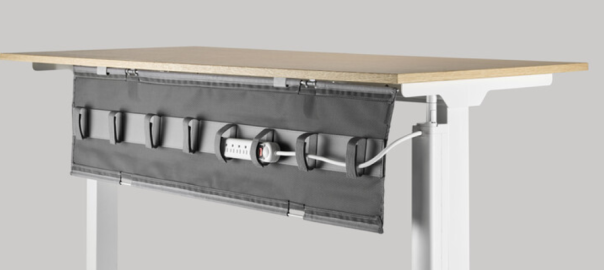Many overlook the essential aspects of ergonomics at work tables that could directly impact their comfort and overall health. A poorly set workspace can lead to discomfort, strain, and even long-term injury.
Despite knowing the importance of proper desk posture, many fail to make simple adjustments like the right chair height, desk arrangement, or monitor positioning. These missed opportunities affect one’s body and decrease one’s work efficiency.
In this article, we’ll highlight the most overlooked aspects of desk ergonomics and share key accessories that can help improve your workspace setup. These changes might seem small, but they can make a big difference in how you feel throughout the day and your overall well-being.
What Are Work Table Ergonomics?
Work table ergonomics focuses on setting up your desk and workspace to promote comfort, reduce strain, and support your body’s natural posture. Well-organised and properly adjusted desk ergonomics help you maintain proper posture throughout your workday, which can prevent discomfort and long-term health issues.
This involves adjusting your ergonomic furniture—such as your desk height and chair—so that your arms, wrists, and legs are in a neutral position and your monitor is at eye level to reduce neck strain.
Commonly Overlooked Aspects of Work Table Ergonomics
Some key aspects of work table ergonomics should be considered when setting up your workspace. These minor adjustments can make a big difference in your comfort and productivity. Here are the most common areas that people miss when optimising their desk ergonomics:
- Monitor Placement: The height and distance of your monitor are crucial. The top of your screen should be at or just below eye level and about an arm’s length away. This helps you maintain proper desk posture and reduces neck and eye strain.
- Chair and Desk Height: Having the right height for your desk and chair is essential for maintaining a neutral sitting position. Your feet should rest flat on the floor, and your arms should be at a 90-degree angle when typing. Sitting at the wrong height can lead to back pain and poor posture.
- Keyboard and Mouse Position: Your keyboard and mouse should be positioned so your wrists are straight when typing. Too high or low can lead to discomfort in your hands and wrists, increasing the risk of ergonomic hazards like carpal tunnel syndrome.
- Lighting: Proper lighting reduces eye strain and headaches. Make sure your workspace has enough light, but adjust the light sources in your environment to avoid glare on your screen.
- Desk Clutter: A minimal desk setup helps reduce distractions and promotes better posture. Keep only the essentials on your desk to allow easy movement and prevent strain from reaching for objects too far away.
Key Accessories to Enhance Desk Ergonomics
When optimising your workspace, the right accessories can significantly affect your desk ergonomics. These tools help you maintain proper desk posture, reduce strain, and support your body for comfort throughout the day. Here are some key accessories that can improve your setup:
Adjustable Chair
The best ergonomic office chair is essential for maintaining a neutral sitting position throughout the day. Choose a chair with adjustable height to match your desk and support your feet flat on the ground. The chair should also offer lumbar support to support your lower back and reduce pressure on your spine.
Adjustable armrests help prevent shoulder and neck strain by allowing your arms to rest comfortably. Additionally, a seat that encourages proper desk posture—keeping your hips at a 90-degree angle and your back straight—helps reduce long-term discomfort and the risk of chronic pain.
Keyboard and Mouse
Your keyboard and mouse position directly affect your wrist and hand health. It’s essential to keep these tools at the right height to avoid ergonomic hazards like repetitive strain injuries. Use a keyboard tray or adjust your desk to keep your arms at a 90-degree angle while typing, with your wrists straight and relaxed.
Similarly, a mouse pad with wrist support can prevent excessive wrist bending, contributing to conditions like carpal tunnel syndrome. Placing the keyboard and mouse at the correct distance also ensures that you don’t have to stretch or overreach, which can lead to strain and discomfort in your shoulders and arms.
Monitor Stand or Arm
Monitor height ergonomics play a significant role in preventing neck and back strain. Your screen should be positioned at eye level so that you don’t have to tilt your head up or down to see clearly. An adjustable monitor stand or arm lets you customise the screen’s height and distance from your face, ensuring it’s at the correct viewing angle.
However, the top of the screen should be at eye level and about arm’s length away from your face (roughly 20 to 30 inches). Proper monitor position reduces strain on your neck and eyes, making it easier to maintain proper desk posture throughout the day.
Footrest
A footrest is particularly helpful if your chair needs to be adjustable or if you have shorter legs. By keeping your feet flat on the rest, your legs are positioned at a 90-degree angle, which promotes healthy circulation and reduces strain on your lower back and hips.
Moreover, it helps maintain a neutral sitting posture, preventing you from slouching or leaning forward to reach your desk. If your feet don’t comfortably touch the floor, a footrest can be a simple but effective solution to support your posture and reduce pressure on your spine.
Desk Organiser
Maintaining a minimal desk setup is vital for reducing unnecessary physical strain. A clutter-free desk helps you avoid awkward twisting or overreaching to grab items, preventing strain on your shoulders, neck, and back.
A desk organiser keeps essential items like pens, notepads, and documents within easy reach. This simple tool ensures that everything is in a convenient location, promoting a more organised and efficient work environment. It can also help lower distractions, allowing you to stay focused while maintaining good posture.
How to Set Up Your Work Table for Maximum Ergonomics
Small changes in how you arrange your desk and furniture can make a big difference in your overall well-being. By following these best practices, you can create a workspace that supports proper desk posture and reduces strain on your body, preventing ergonomic hazards and boosting your productivity.
Choose the Right Chair
The best ergonomic office chair is key to a healthy workspace. It should support your back and let you sit with your feet flat on the floor and knees at a 90-degree angle. The chair should also provide lumbar support (support for your lower back) to prevent slouching and discomfort. Make sure the armrests are adjustable to keep your shoulders at ease and your arms at a comfortable angle while typing.
Position Your Desk Correctly
Set your desk at a height that helps your arms rest at 90 degrees when typing. This helps keep your wrists straight and avoids unnecessary strain. A desk that is too high or too low can lead to discomfort over time, contributing to the effect of poor posture. If your desk height is fixed, consider a keyboard tray to adjust the height of your keyboard and mouse.
Arrange Your Monitor Properly
The placement of your monitor is crucial for monitor ergonomics. Your screen should be at eye level, so you don’t need to tilt your head up or down. The screen’s top should be at or slightly below eye level and about an arm’s length away from your face. This helps maintain proper desk posture and reduces neck and eye strain, allowing you to work more comfortably for more extended periods.
Keep Your Workspace Clutter-Free
A minimal desk setup is essential for a comfortable and productive workspace. Keep only the items you need on your desk and organise them within easy reach. This prevents you from twisting or stretching to grab things, which can cause unnecessary strain on your body. A tidy desk also helps you stay focused and prevents distractions, leading to a better work experience.
Adjust Your Feet Position
If your feet don’t rest comfortably on the floor, it can cause strain on your lower back and legs. Consider adding a footrest (a small platform for your feet) to support your posture. Keeping your feet flat on the ground helps align your body and promotes proper desk posture. A footrest is handy if your chair or desk needs to be adjustable.
Set Your Keyboard and Mouse Correctly
To avoid strain on your wrists, position your keyboard and mouse at a height where your arms can remain relaxed. Your forearms need to be parallel to the floor, and your wrists should stay straight while typing.
Also, using a mouse pad with wrist support can help reduce pressure on your wrists. However, make sure the mouse is placed close to the keyboard to avoid straining your shoulders.
Benefits of Proper Work Table Ergonomics
Setting up your work table with proper ergonomics offers numerous benefits that go beyond comfort. By aligning your desk and chair and monitoring them correctly, you can avoid physical strain and promote better health, making it easier to work efficiently and comfortably for more extended periods. Here are the key benefits of good table ergonomics:
Improved Posture
When you set up your workspace with desk ergonomics in mind, you naturally adopt better posture. With the right chair height, desk positioning, and monitor placement, your body is aligned correctly. This reduces the chances of slouching or hunching, which is a common cause of back, neck, and shoulder pain.
As a result, you experience less fatigue and discomfort throughout the day. If you already have poor posture, learning how to correct posture through ergonomic adjustments can bring noticeable improvements.
Reduced Risk of Injury
Improper workstation setup can lead to various ergonomic hazards (physical strain or injury caused by poor posture or improper equipment). Long-term misuse of your workspace can result in repetitive stress injuries such as tendonitis, carpal tunnel syndrome, or lower back pain.
By focusing on table ergonomics, you can significantly reduce these risks. Proper setup helps distribute the physical load evenly, avoiding strain on any part of your body.
Increased Productivity
When your workspace is ergonomically friendly, you’ll feel more comfortable and focused. Without the distraction of discomfort, you can concentrate on the task at hand. This directly improves your efficiency and output.
For example, a minimal desk setup ensures everything you need is within reach, cutting down the time spent searching for items. A well-organised, comfortable workspace also helps keep your mind clear, allowing for better decision-making and creativity.
Better Long-Term Health
Proper ergonomics not only help you avoid immediate discomfort but also protect your long-term health. Sitting for an extended time with poor posture can result in chronic conditions, including joint problems, muscle strain, and poor circulation.
By setting up your workstation to support your body’s natural movements, you’ll promote better spine health, reduce tension in muscles, and minimise the risk of future health issues.
Reduced Eye Strain and Fatigue
Good table ergonomics also means setting up your monitor at the correct height and distance. This helps reduce the strain on your eyes, which can occur when you’re looking at a screen too close or too far away.
A well-positioned screen reduces eye fatigue, which can cause headaches and discomfort over time. You’re also less likely to suffer from digital eye strain (caused by prolonged screen time) if your monitor is set at the right level.
Conclusion
Many people overlook important ergonomic factors when setting up a work table, which could significantly impact their comfort and health. Whether it’s the height of their desk, the placement of their monitor, or the type of chair they use, small adjustments can lead to major improvements in their well-being.
As you rethink your work table setup, remember that ergonomic furniture and pro.
per adjustments don’t just help you feel better in the moment—they contribute to long-term well-being. Ignoring these aspects may seem minor, but the benefits of ergonomics are clear: fewer injuries, less discomfort, and an overall boost in your work performance.

